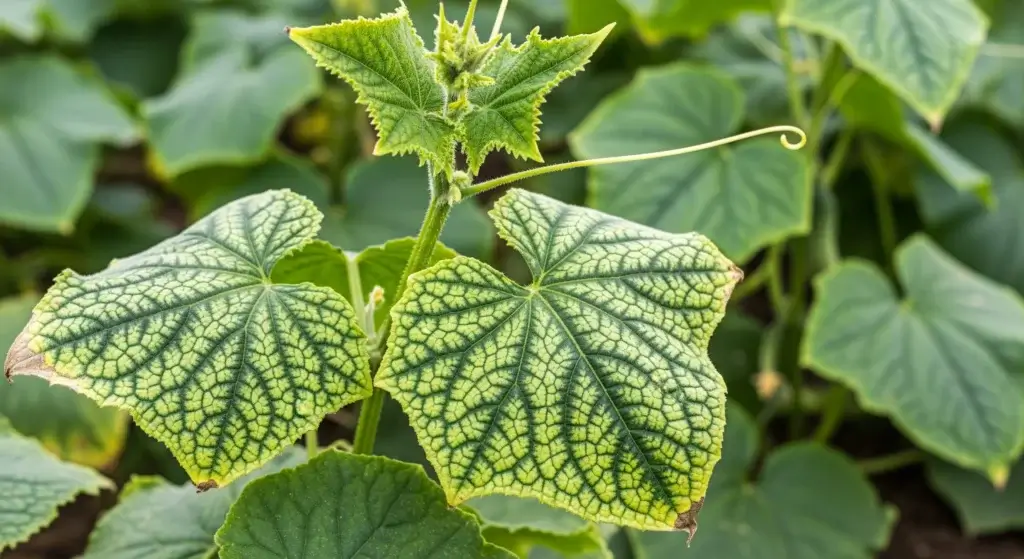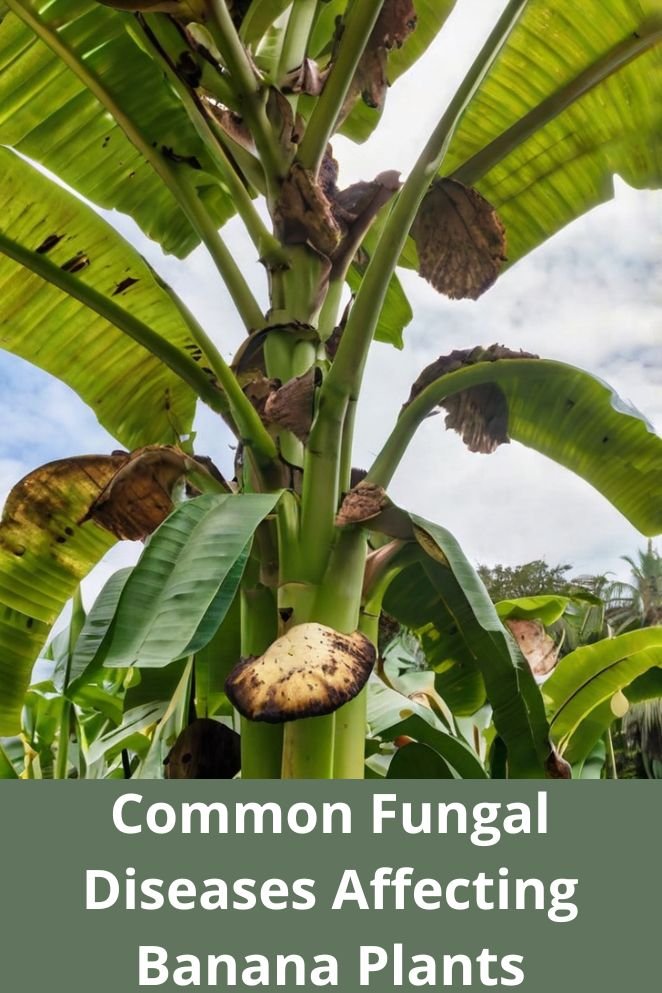
Originally from Southeast Asia, banana plants are now cultivated in tropical regions worldwide.
They are a vital food source for millions of people. Bananas are one of the most traded fruits globally, providing income for millions of farmers, especially in tropical regions.
Unfortunately, banana plants are prone to various fungal diseases, which can severely damage plantations and cause significant economic losses.
This guide will cover the most common fungal diseases affecting banana plants and outline effective control measures to manage these threats.
Common Fungal Diseases in Banana Plant
Fungal diseases pose significant challenges for farmers globally, impacting various crops, including banana plants. These diseases are among the most severe threats to banana production.
Here are some common fungal diseases that affect banana plants:
Black sigatoka disease (Black leaf streak)
Black Sigatoka, also called Black Leaf Streak, is a serious disease in banana plants caused by the fungus Mycosphaerella fijiensis.
It starts as small, dark spots on the leaves, which gradually grow and merge into streaks.
Eventually, the leaves turn black and die.
When the leaves blacken, they can no longer perform photosynthesis, which is essential for the plant’s growth and fruit production.
Consequently, the plant produces smaller fruits, and overall yields drop significantly.
Black Sigatoka flourishes in warm, humid climates, making it especially tough to manage in tropical areas.
The disease spreads through windblown rain and spores, further complicating control efforts.
- Read also: Beat the Blight: Identifying Fungal Diseases of Eggplant
- Read also: Fungal Diseases of Beans: Identification, Prevention, and Control
Panama disease (Fusarium wilt)
Panama Disease, caused by the soil-borne fungus Fusarium oxysporum f. sp. cubense, poses a serious threat to banana plants.
The fungus invades through the roots and spreads to the vascular system, leading to wilting and yellowing of the leaves until the plant ultimately dies.
There are various strains of this fungus, with Tropical Race 4 (TR4) being the most destructive.
TR4 can infect many banana varieties and is hard to control. Unfortunately, there is no cure for Panama Disease, so infected plants must be removed and destroyed.
The disease spreads via contaminated soil, water, and plant material.
Once a plantation is infected, eliminating the fungus from the soil becomes extremely difficult.
Anthracnose diseases
Anthracnose, caused by the fungus Colletotrichum musae, targets the fruit, flowers, and leaves of banana plants.
It affects bananas both before and after harvest, causing dark, sunken lesions on the fruit that make it unmarketable.
On leaves, it starts as small, dark spots that can expand and merge.
This disease thrives in warm, humid environments and can spread quickly if not properly managed.
Rain and splashing water are the main ways Anthracnose spreads.
Yellow sigatoka diseases
Yellow Sigatoka, caused by the fungus Mycosphaerella musicola, shares similarities with Black Sigatoka but is typically less severe.
It begins with small yellow streaks on the leaves, which gradually turn brown and necrotic.
Similar to Black Sigatoka, Yellow Sigatoka hampers the plant’s ability to carry out photosynthesis, resulting in reduced vigor and fruit production.
The disease spreads through windblown rain and spores.
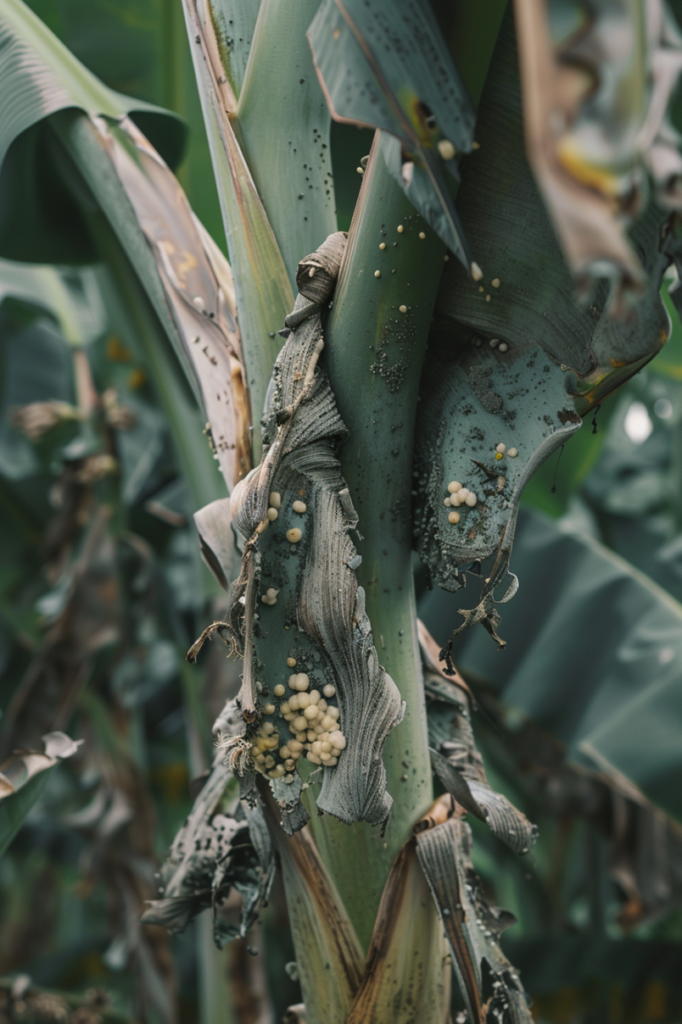
How to Control Banana Plant Fungal Diseases
For effective and sustainable control of fungal diseases, Integrated Disease Management (IDM) is the key approach.
It combines different methods to control diseases.
Controlling black sigatoka
- Resistant varieties: Choose varieties resistant to Black Sigatoka from your local extension service or nurseries.
- Cultural practices:
- Sanitation: Remove and destroy infected leaves (>50% infection) regularly (every 15-30 days). Promote faster degradation by chopping.
- Deleafing (strategic): Maintain good air circulation by removing older leaves (aim for 5-7 healthy leaves per plant).
- Weed & pest management: Control weeds and pests that can worsen Black Sigatoka.
- Irrigation: Manage irrigation to reduce humidity (drip irrigation is better than overhead sprinklers).
- Suckers and pruning: Manage suckers and male buds properly. Prune dried materials and trim bunches for good air circulation.
- Fungicides (as preventative): Use them judiciously with a certified crop advisor’s guidance to avoid resistance. Target pre-necrotic stages (early signs) for best results.
Controlling panama disease
- Preventive strategies
Unfortunately, controlling Panama disease is particularly challenging because the fungus persists in the soil for decades.
- Resistant varieties: Use varieties resistant to the specific Fusarium wilt race in your region. Research new resistant varieties as the fungus can mutate.
- Clean planting material: Use disease-free suckers or tissue-cultured plantlets.
- Crop rotation: Rotate with non-susceptible plants (marigolds, cover crops) for several years to starve the fungus in the soil.
- Sanitation: Remove and destroy infected plants promptly to prevent spore spread.
- Cultural practices
- Soil management: Improve drainage to avoid favorable conditions for the fungus.
- Balanced fertilization: Provide balanced nutrients for strong plant growth and disease resistance.
- Intercropping (potential): Research suggests intercropping with Chinese chives (Allium tuberosum) might help (more research needed).
- Biological control (Future potential)
Research on using beneficial organisms to fight the fungus is ongoing.
- Chemical control (Limited effectiveness)
No highly effective fungicides target Fusarium wilt directly in the soil. Soil fumigation methods exist but are expensive, environmentally unfriendly, and not always reliable.
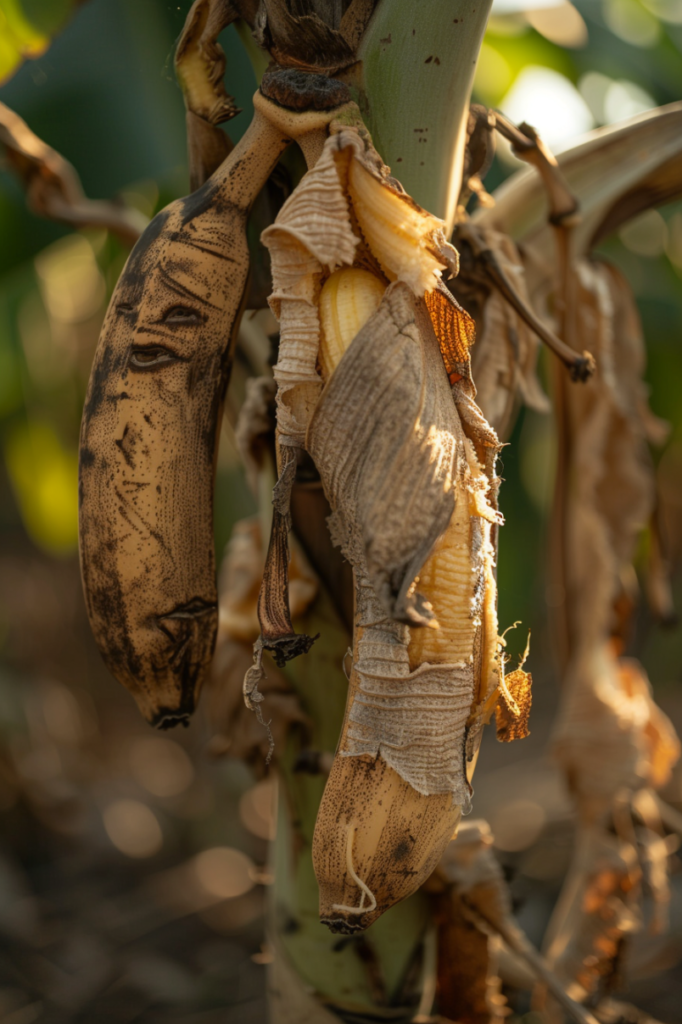
Controlling anthracnose disease
- Cultural practices
- Sanitation: Remove and destroy infected plant parts (leaves, fruits, flowers).
- Irrigation: Manage irrigation to reduce humidity around plants.
- Weed control: Maintain good weed control to improve air circulation.
- Fungicides: Apply fungicides as a preventative measure, following a certified crop advisor’s guidance.
Controlling yellow sigatoka disease
- Cultural practices
- Sanitation: Regularly remove and destroy infected leaves with at least 20% necrotic area.
- Balanced fertilization: Ensure balanced nutrients for strong plant growth and disease resistance.
- Fungicides (when necessary): Use fungicides only when Yellow Sigatoka reaches significant levels, following a certified crop advisor’s recommendations.
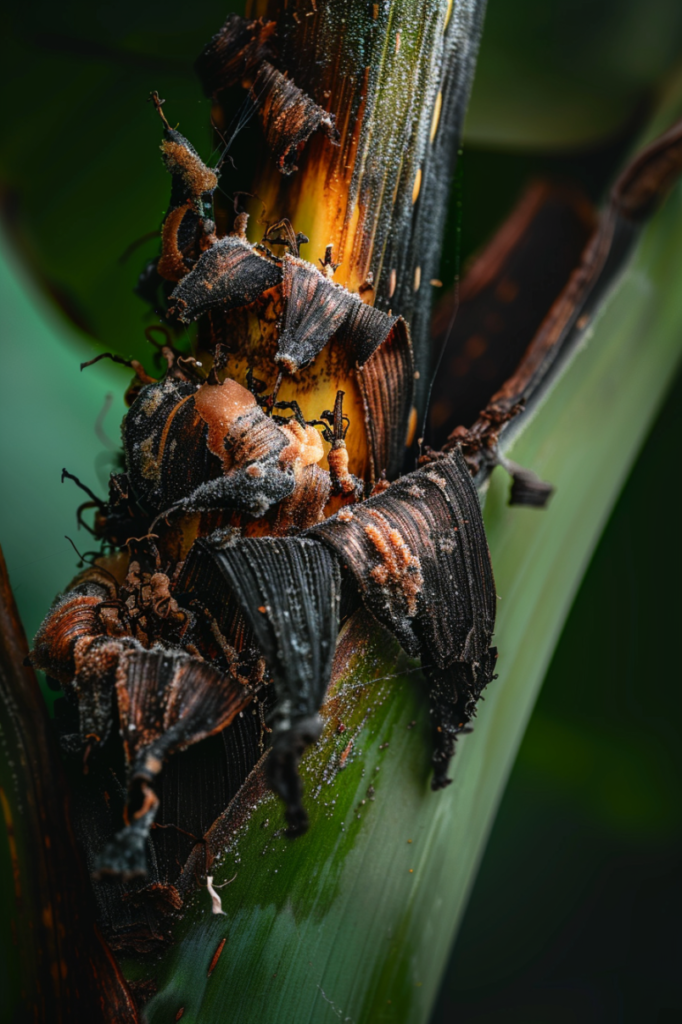
- Read also: Cucumber Killers: Common Fungal Diseases of Cucumber
- Read also: Beat the Blight: Common Fungal Diseases of Tomatoes
Conclusion
Fungal diseases present a major threat to banana production, but with the right knowledge and practices, their impact can be reduced.
Integrated disease management (IDM) stands out as the primary approach, combining different methods like cultural practices, biological controls, and careful use of fungicides.
Prevention is key, particularly for diseases like Panama disease, which lacks a cure.
Measures such as maintaining cleanliness, rotating crops, and choosing resistant varieties are essential.
By identifying diseases early and implementing integrated disease management strategies, banana growers can safeguard their plants and ensure fruitful yields.
FAQs
Black Sigatoka appears as small, dark streaks on the leaves that expand and merge, eventually causing the leaves to turn black and die. Monitoring your plants regularly for these symptoms is crucial for early detection and management.
Unfortunately, there is no cure for Panama Disease once a plant is infected. The best management strategy is prevention, including using disease-resistant varieties and maintaining strict sanitation practices.
Yes, organic methods such as using biological control agents like Trichoderma spp. and Bacillus spp., and applying neem oil or other natural fungicides can help manage fungal diseases. Additionally, maintaining good cultural practices and soil health is essential in organic farming.
While fungal diseases can affect the appearance and quality of bananas, the fruit is generally safe to eat if it shows no signs of rot or spoilage. However, heavily infected fruit should be discarded.

